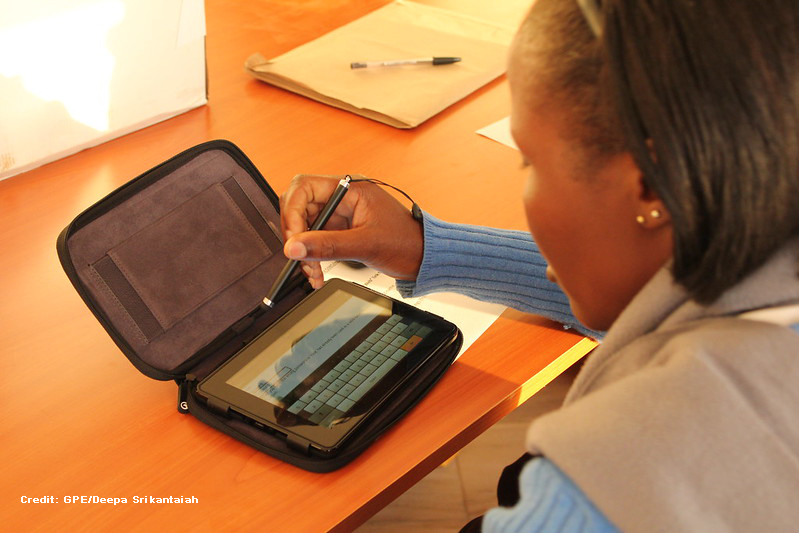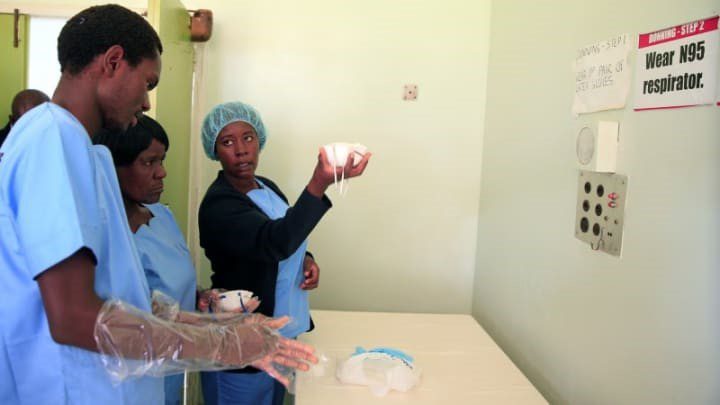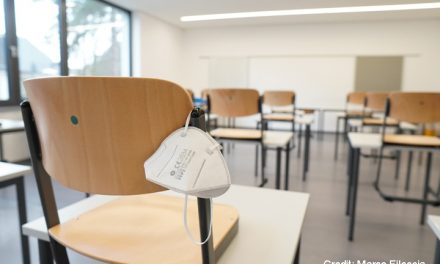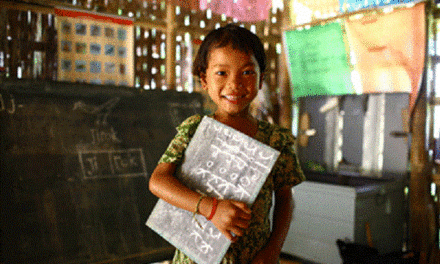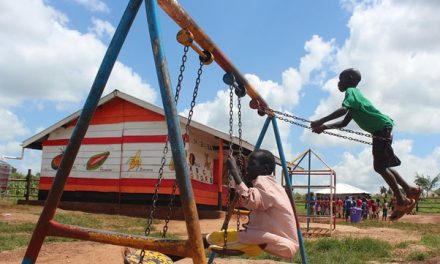This blog was written by Mary Burns, Education Development Center. It was originally published on the K-12 Talk website on 2 December 2020.
With large-scale school shutdowns, the ensuing lack of academic and social supports for students, and the move to remote learning, COVID-19 has been an educational catastrophe for many students. Yet, as in many crises, the education community has responded with resilience and imagination about how we can emerge from the pandemic with a more equitable and high-quality education system. Remote learning in particular has provided opportunities for rethinking instructional design, focusing on student wellbeing, addressing inequity, and embracing and experimenting with educational technology in ways that can be applied to the post-COVID classroom. These “silver linings,” upon which we can and should build, are discussed below.
- Remote learning has spawned a culture of experimentation and risk-taking with technology
We know from research that a major enabler of technology adoption is school culture. And where teachers have resisted or had difficulty integrating technology, it has often been because schools may not have supported experimentation and risk taking—and the failure that may possibly result—because of the pressures of high-stakes testing.
That has changed in the age of pandemic. Many state assessments were canceled in the 2019-2020 academic year and several states have asked for additional waivers for the 2020-2021 school year. Indeed, remote learning has prompted much reflection on high stakes assessment in general. With such accountability pressures removed, teachers are experimenting with new technologies. Most obvious is the shift to synchronous learning via Zoom; in particular, teachers are discovering the uses of breakout rooms and more interactive whole-group live instructional tools such as Nearpod or Pear Deck.
- Our collective technology IQ has soared
Synchronous learning, asynchronous learning, hybrid, HyFlex, simultaneous hybrid, learning management systems, web conferencing tools …Who even knew what these terms meant before COVID (BC)? Now that technology has become an educational lifeline, teachers have developed deep expertise in these modalities and tools. They have moved from knowing how to teach in class with technology to teaching via technology; and have shifted from using technology to supplement or complement instruction to using technology as a driver of instruction.
- We are more focused on good instruction and instructional design
Teachers and students are struggling still with remote learning, so why categorize this as a “silver lining”? As someone who has spent twenty years in online learning, I can say this is the first time in years that I have seen such a unified focus on teaching well via technology. But even more importantly, this has been an opportunity for educators and schools to reconsider what it means to teach well in general. Every teacher with whom I work is plumbing the depths of instruction and good old instructional design: What should my students know and be able to do? What activities can best help them learn? Which technologies and modalities of technology use can best engage them and help promote a particular type of learning? Despite the very real struggles of remote learning, this should yield long term beneficial dividends for good teaching.
- Blended learning is here to stay
Health experts suggest that with widespread vaccinations, we can begin to return to some degree of normalcy in mid-to-late 2021. But until we know it is completely safe to be together in enclosed spaces, a big part of returning to normalcy will involve some degree of online learning. Students may continue to stagger in-class with remote learning until a targeted percentage of the population has been vaccinated. Thus, blended learning (or as some call it in this context, hybrid learning) will play an enormous role in the return to educational normalcy.
To get even more granular, blended instruction at the classroom level has made possible massive improvements in teaching and learning. Teachers have seen that technology can provide students with content and support before and after “live classes” (whether face-to-face or via Zoom) and thus appreciate how blending online and face-to-face modalities can extend windows of opportunity for learning. Many teachers with whom I work are already transitioning to a post-pandemic blended classroom: replacing classroom-based lectures with short instructional videos that students can access prior to class and combining online written discussions with in-person oral ones.
- We are beginning to tackle digital equity issues
For decades, in-person schooling disguised the digital equity issues faced by so many of our students. Millions have had to rely on libraries and after-school study halls for access to computers and the Internet to do their homework, but these venues and tools have been closed to them during remote learning.
As a nation we have begun to have serious conversations about digital equity and inclusion, and about how to ensure that access to digital learning is part of education—not just during this pandemic, but in the future. Many school districts have been providing hardware and connectivity to students who lack access to digital infrastructure. Others have offered online training to parents so they can support their children’s schoolwork. The use of federal funding via the CARES Act, Federal Communication Commission policies freeing spectrum for rural schools, and public-private partnerships supporting remote learning via low-cost home-based connectivity, are all helpful starts that will hopefully be expanded upon.
- We are more focused on the whole learner
Fostering students’ social and emotional learning (SEL) has sometimes been a hard sell, especially in upper grades where some teachers may have been more comfortable focusing on college and career readiness skills.
COVID has changed this. We know that the pandemic is hitting young people hard in terms of emotional well-being; their teachers are also struggling. Many teachers with whom I work have shared how Zoom has made the chaos and dysfunction of many students’ homelives painfully visible. Teachers are more attuned now to the whole learner and to student wellbeing. They are tapping into SEL strategies and making them more explicit (see #7 and #8 below) as they work remotely with students. They are designing learning activities to be shorter and more manageable, thus making it easier for students to be successful during this trying time. And for many teachers, the first words they use to begin each Zoom class are: “How are you?”
- We recognize we must promote healthy digital behaviors
Students and teachers are spending more time in front of a screen and have experienced firsthand the deleterious physical effects of too much screen time —vision problems, back and neck issues, and Zoom fatigue. As we become more attuned to the downside of increased digital interaction—understanding better the relationship between increased screen time and depression, lack of sleep and physical health issues—our awareness of the importance of “digital hygiene” and healthy digital behaviors has increased.
More broadly, the explosion of fake and sensationalized news via social media has accelerated during COVID; of course, it existed pre-COVID and extends well beyond the educational sphere. Many of us in the educational technology community erroneously believed that our “digital native” students, by virtue of being lifelong power users of technology, had somehow absorbed by osmosis dispositions and skills such as Netiquette, digital citizenship, media literacy and information literacy. We now know we were wrong. For the first time in years, I have heard many in our community acknowledge the need to promote digital ethics; help students and teachers recognize propaganda, bias, sensationalism and outright lying; foster awareness about how social media in particular is an accelerant of disinformation; and confront our responsibility in regulating our own online behaviors.
- We are trying to enhance the potential of “self-paced learning”
If remote learning is going to work, we must focus on self-paced or independent learning as much as we do on synchronous learning. Before remote teaching, even in the online learning world, self-paced learning was something learners did offsite on their own time with minimal support. Now, teachers are working on improving self-learning in two critical ways. First, via instructional design—through chunked learning and by personalizing and individualizing instruction via playlists, HyperDocs, projects, choice boards, and gamification (from branching scenarios to quizzing software like Quizlet and Kahoot). Second, teachers are helping students develop the self-regulation, time management, and self-control skills that are essential to successful self-paced learning.
- We recognize that well designed classrooms are a requisite, not an amenity
Finally, considerations of school and classroom physical design in order to facilitate better learning have long been luxuries that only wealthy districts could indulge. Now school and classroom design has assumed even greater importance because of the pandemic, as we focus on adequate ventilation, flexible spaces with modular school furniture for distancing, and large, open interior spaces with abundant daylight and air circulation.
Pandemic aside, there’s a robust body of research in education specifically, and in facility design broadly, linking flexible space, modular furniture, natural daylighting, proper air circulation, and thermal comfort with student academic performance, progress and attitudes toward school. We can redesign schools to be healthy and productive spaces.
These promising “silver linings” do not compensate for the human, social, and economic tolls that COVID has wrought, particularly on our poorest and most marginalized students. And without the necessary policy prescriptions, funding, and leadership, these positive shifts are destined to remain tantalizing opportunities rather than established practices. As an education community, we must ensure that these promising practices do not fade away with the pandemic itself but instead outlast it.

